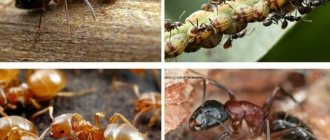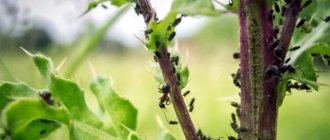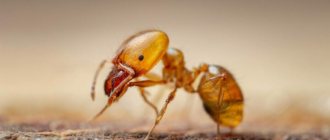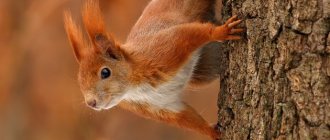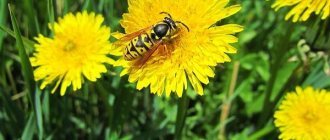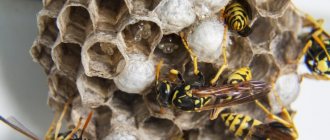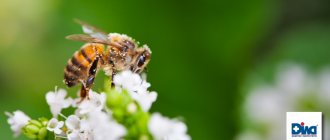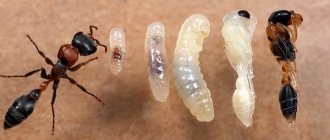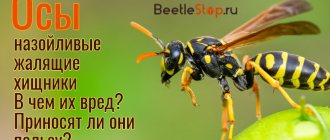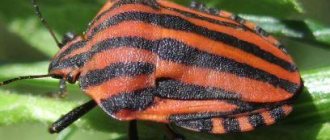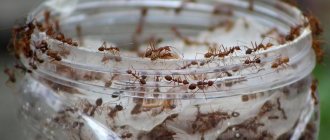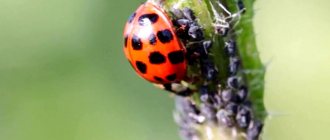At first glance, anthills in the garden are invisible, they do not look like huge forest piles of pine needles. And garden ants themselves are smaller than their forest counterparts. But it soon becomes clear that someone other than you is in charge of your garden.
It is quite difficult to find an area without ants in garden communities and cottage villages; to a greater or lesser extent, they are everywhere. The absolute absence of ants in the garden should not please, but alert the owner, because they avoid areas with high groundwater levels or contaminated soils.
There is a theory according to which ants, as well as bees and cats, show a special love for geopathogenic zones and build their homes in abundance in them.
Life in an anthill
Ants live in families (colonies) in anthill nests, which are built in the ground, wood, and under stones. Ants are organized creatures. A family (colony) is a complex structure with a clear division of responsibilities between its members.
Like all “social insects,” ants are divided into 3 castes :
- females (queens or queens). They lay eggs (males emerge from unfertilized eggs, females emerge from fertilized eggs). The queens have wings, which they chew off immediately after the mating flight. Female ants differ in size from other inhabitants of the anthill; they are much larger than males and worker ants. The queen is the only long-lived colony;
- males . Their only function is to participate in mating. Later they are destroyed by their own relatives from the anthill. Males are much smaller in size than females, but also have wings. Their lifespan is only a few weeks;
- worker ants (foragers). These are the same females, only with an underdeveloped reproductive system. The responsibilities of foragers include caring for the family, food and future offspring. They have no wings and are much smaller in size than the female. Large-sized workers are soldier ants (they have more developed jaws and a large head); they also perform all the duties of workers, but, among other things, protect their nest from attacks by enemies.
REFERENCE! Mating occurs in a female only once; the resulting sperm is enough for her to reproduce offspring throughout her life (10-20 years).
REFERENCE! Not all types of ants have a clear division into castes.
For example, garden black and pharaoh ants build a “career” for themselves: from birth they care for their offspring, then they arrange the anthill and only at the end of their lives they obtain food.
Is it worth removing ants?
In fact, getting rid of pests is not easy. They multiply quickly, establish colonies, are present on the territory of the land in large quantities and develop vigorous activity. Therefore, most gardeners believe that it is necessary to fight them. Few people like it when daily work in the garden goes to waste. After all, ants spoil vegetable crops, berry bushes and fruit trees.
But do not forget that ants are a link in the chain of natural circulation. They eat other harmful insects and thereby protect plants.
Do you have a lot of ants in your garden?
Yes
No
Ants of Russia
More than 300 species of ants live in Russia The most common are: wood ant, garden black ant, carpenter ant and harvester ant.
Forest
There are several varieties of this type:
- red forest ant. This is a fairly large insect, 7-14 mm in length. The body is dense, the head is large, the abdomen and back of the head are black, the rest of the body is orange. Inhabits coniferous, deciduous and mixed forests. Hardworking builders. The anthills they build sometimes reach 2 or more meters in height. Forest red ants prefer to live in one family, which means that the female that flies out (nuptial flight) from the nest after fertilization does not build a new colony, but returns to her family. A compartment in the nest is allocated for the queen, where she breeds new offspring. The number of one anthill of red ants can reach up to a million inhabitants;
black-brown ant. A common species of forest ants. Very small in size. The length of an adult insect is only 5-8 mm. The body color is black and gray. Usually builds nests under stones. If he builds anthills, then they are very small. The size of the colony of this species is small, since females usually move out after fertilization and build new families;
Black garden (lasia)
Small insect. Its length is 3-5 mm. The color is black. Garden ants build nests in old rotten trees and soil (mound). Their queen, after the mating flight, does not return back to the anthill, but creates a new colony, and independently, without the help of worker ants. The queens of this species have the longest life expectancy - 28 years.
Woody
Belongs to the genus Campotonus. The territory of the Russian Federation is mainly inhabited by black and shiny wood borers. Woodworms are quite large in size, their length can reach 11-12 mm. They inhabit mainly deciduous and coniferous forests. To build nests, they prefer old, fallen trees, rotten stumps or dried branches. They rarely descend to the ground. They live in small families with a single queen.
The number of one colony is approximately 5-8 thousand individuals .
Reaper ants
Their body length varies from 5 to 10 mm. They have a large head and well-developed jaws, which they need for grinding seeds and grains (the main diet of reapers). Harvester ants live in large colonies. Nests are built underground. Most often their settlements can be found on roadsides or in fields. The young queens and males of these individuals usually overwinter in the anthill, and with the onset of spring (while the soil is still wet) they fly out of the nest to establish new colonies.
Help for insect bites
When an ant bites, it injects poison into the wound, which consists mainly of formic acid. Pain sensations appear in the damaged area, similar to the consequences of a mosquito bite. After some time, the wound begins to swell, and the skin becomes red and very itchy.
When an ant bites, the symptoms depend on the body's tendency to allergic reactions. In many cases, no special treatment is required. In this case, the wound may swell and redden more than usual, there is a possibility of a local increase in skin temperature and the appearance of a rash.
The following folk remedies for treating ant bites will help relieve pain and relieve irritation:
- soda mixed with water to a paste;
Baking soda helps reduce itching and relieve swelling - ammonia diluted with water in a ratio of 1:1;
The burning sensation after an ant bite subsides if you use a mixture of water and ammonia. - mint toothpaste;
Toothpastes have not only a therapeutic and prophylactic effect, but also an analgesic effect. - milk lotion;
To minimize pain, apply a lotion of milk or milk ice to the site of the ant bite for 10 minutes. - crushed activated carbon;
Activated charcoal helps neutralize itching after an ant bite - lotion with echinacea tincture;
For an ant bite, Echinacea tincture can be used as a lotion, and also taken orally (to eliminate an allergic reaction) - chopped onion.
Fresh onion juice is a good remedy for insect bites.
Benefits and harms
In nature, there are no only harmful or only beneficial insects. There are situations in which one or another species can either be useful for a person, or cause him a lot of problems.
The forest ant is listed in the Red Book as the main protector of forests from pests. By eating a species of harmful insect that has begun to actively reproduce, forest ants stop its further spread. In addition, these tireless workers carefully loosen the soil, saturating it with oxygen. They also play an important role in the food chain, being the main food for many forest birds: wood grouse, woodpeckers, tits. The acid secreted by ants is widely used in medicine: drugs for rheumatism, joint pain, and tuberculosis are produced on its basis.
And only for summer residents , red ants are a real disaster : the diet of these individuals is mostly honeydew (sweet secretions of aphids). Ants protect aphids, breed them in huge quantities and even take them with them to the anthill for the winter. Aphids cause enormous damage to gardens and vegetable gardens, destroying all vegetation. Therefore, the appearance of these forest guests in summer cottages causes real panic. Black garden ant. This insect undoubtedly does more harm than good. When settling in gardens, they happily eat the fruits of fruit trees and suck nectar from flowers, damaging them. And just like red ants, they breed herds of aphids.
The harvester ant is of considerable benefit in the virgin steppes, where it actively spreads plant seeds. But if these insects live near the currents where grain is threshed, this threatens a serious disaster for the harvest.
The carpenter ant is useful because it destroys pests, insect corpses, as well as larvae living under the bark of trees. But woe is it if woodworms have chosen for their settlement prepared boards stacked in a barn or in the courtyard of a residential building. By grinding down the wood from the inside and turning it into dust, they make the building material completely unsuitable for use. Woodworms can cause a lot of problems for humans if they settle directly in a living space. Usually in houses furniture, doors, and wooden baseboards suffer from their encroachments.
Ants bring a lot of trouble to humans only when they settle in close proximity to him. Nature would hardly live and flourish without these little hard workers. You need to remember this when you want to stir up and destroy an anthill just for fun.
The best chemicals
Manufacturers produce a wide range of professional insect control products that can be used without fear for the health and safety of people and animals. They effectively destroy ants in a short time.
"Ant-eater"
The cheap product comes in powder and clear liquid form. Used to control insects in the form of a solution. To obtain the required concentration, dilute 1 ml of liquid or 1 gram in 10 liters of water. powder. This amount of solution is designed to treat 5 square meters of area.
Advantages:
- the drug does not accumulate in the soil;
- Does not harm worms, pets or birds.
Disadvantage: it is strictly not recommended to water the roots of the plant with a solution of the drug.
Precautionary measures
The drug should not be poured into sewers or water bodies. Diazinon, which forms the basis of Anteater, can penetrate human skin, so you need to work with it wearing rubber gloves and a respirator. At the end of treating the soil with the preparation, hands should be thoroughly washed with soap. The clothes in which you worked with the drug were washed separately from all other things.
"Muracid"
The product is actively used by summer residents not only to combat ants, but also other garden pests. The drug is available in powder form and in ampoules of 5 or 10 ml. Use the product in the form of a solution.
It is important to remember that it becomes safe for humans only after dilution. To achieve the desired result, it is enough to dilute 1 ml or 1 g of the drug in 10 liters of water. The solution is poured directly onto the anthills.
Advantages:
- economical consumption;
- harmless to plants, animals and beneficial bacteria;
- does not accumulate in the soil.
Disadvantage: high concentrations of the drug can be dangerous to humans.
Precautionary measures
“Muracid” poses a danger to bees and fish, so it should not be poured into water bodies. When working with the drug, it is necessary to take precautions similar to “Anteater”. The person treating the anthill with the solution is strictly prohibited from smoking.
"Ant"
The product is available in the form of granules. The main purpose of the drug is to fight black ants. The drug does not need to be dissolved in water. It is simply scattered under fruit trees, 2-3 granules per 1 sq.m.
Advantages:
- does not pollute the soil;
- destroys an anthill in 1 treatment;
- not dangerous for earthworms.
Disadvantage: the drug cannot be used near beds of onions grown for harvest.
Precautionary measures
When working with Ant, you need to wear personal protective equipment. At the end of work, be sure to wash your hands with soap.
"Thunder-2"
The drug is available in microgranules. To combat insects, it is buried in the soil in the areas of greatest ant activity to a depth of 2-3 cm. To achieve the desired result, it is enough to add 1-2 microgranules per 1 sq.m. to the soil. Ants disappear from the area on the 2nd day after treatment.
Advantages:
- low cost;
- safe for plants, bees and earthworms;
- has a fast effect.
Disadvantage: requires caution when using.
Precautionary measures
When working with Grom-2, you need to wear personal protective equipment. You need to especially protect your eyes from getting the drug. After work, be sure to wash your hands with soap.
"Expel"
The basis of the product is chlorpyrifos. The drug is available in powder form. Expel can be used in the form of a solution or pure form.
When working with powder, it is scattered in places where ants accumulate at the rate of 10 g per 1 sq.m. To prepare the solution, the package of powder is dissolved in 5 liters of water.
Advantages:
- high efficiency;
- fast action.
Disadvantage: high degree of toxicity.
Precautionary measures
It is strictly forbidden to place “Expel” in the access area of children. It is not allowed to scatter the powder on the surface of lawns. Do not drink, eat or smoke while working with the drug.
Photo
Next you will see a photo of forest ants:
Why are they useful?
Black ants
The garden black ant is a real delicacy for many animals and birds. As the main source of food, ants are eaten by moles, hedgehogs, frogs, bears and other representatives of the animal world. Many species of birds also indulge in this delicacy.
